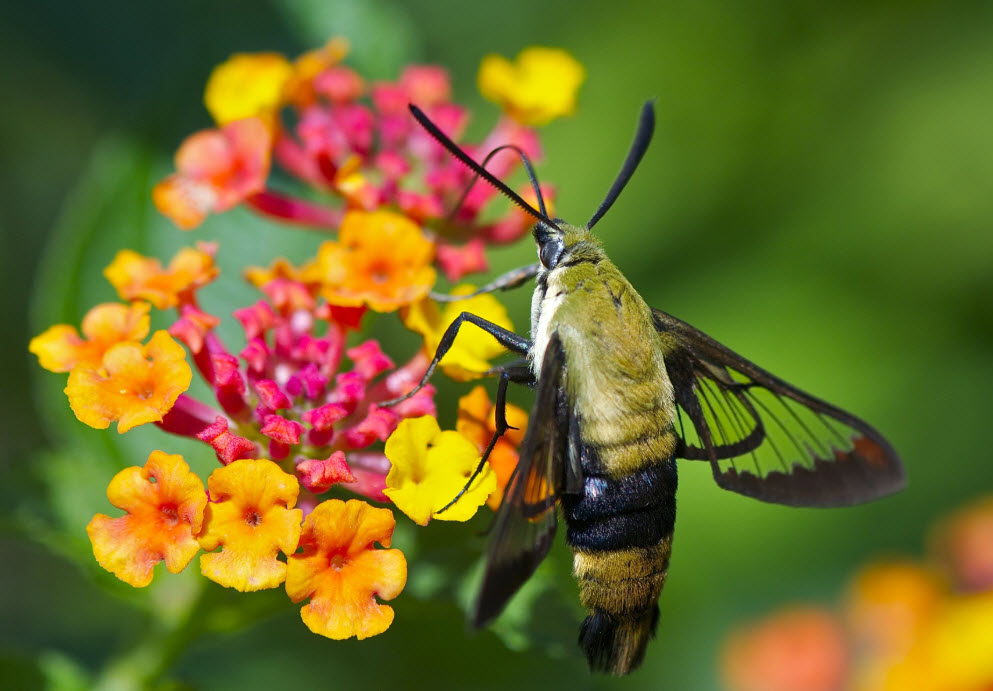
The hummingbird hawk-moth has greyish-brown forewings, bright orange hindwings, and a greyish body with a broad, black-and-white tail, which are actually. Their genus name is Macroglossum, meaning ‘long-tongued’. In 2019, 198 acres of new prairie areas were also planted. Hummingbird moth definition: any of various moths of the family Sphingidae, having long narrow wings and powerful. Hummingbird hawk-moths belong to the Sphingidae family which share the ability to fly very fast, hover and have a long tongue. Last year, the Metroparks seed nursery produced 1,841 pounds of native plant seed from 265 species to help restore habitat and in other park areas, providing important nectar sources for insects like the hummingbird moth. The Hemaris thysbe caterpillar is a hornworm with a pale horn and numerous pale spots along each side that feeds on cherry, European cranberry bush, hawthorns, honeysuckle, and snowberry. It varies from other Hemaris moths in that the legs are pale and the wings have rusty scales. These are generally known as Hummingbird Hawk-moths, Clearwing Hummingbird Moths and the White-lined Sphinx. The Hummingbird moth we often see are the parent of the tomato hornworm caterpillar. Hemaris thysbe is the hummingbird moth or common clearwing moth. Different Species of Hummingbird Moths Generally, there are three different species of hummingbird moths belonging to three separate genera.

Hummingbird Moth Facts Appearance Hummingbird moths have thick, bumblebee-like bodies and long wings. These beautiful moths lay their eggs on a variety of plants. The hummingbird hawk-moth ( Macroglossum stellatarum), a moth found in Europe, Africa and Asia, is not a member of the genus Hemaris, although it is in the sphinx moth family. These insects have tongues which can be up to four inches long, allowing them to drink nectar while they hover over flowers. You can also attract them to your garden by planting some of their favorite larval host plants or adult nectar sources. These are called Hummingbird Moths and also sphinx moths and hawk moths.

While most moths fly at night, these Sphinx moths fly by day, so it is easy to get a glimpse of one feeding on one of the native plants growing in the Metroparks. The adults are excellent pollinators and will nectar on native plants like wild bergamot, buttonbush, milkweed, wild phlox and thistle. A similar species, the snowberry clearwing ( Hemaris diffinis) looks more like a large bumblebee and is less common in northwest Ohio than the hummingbird clearwing.Ĭlearwing moths get their name from the lack of some scales on their wings, causing them to appear transparent.ĭepending on the species, the caterpillars will eat plants such as honeysuckles, snowberry, dogbane, and members of the rose family. Upon closer examination, it was found to be a look-alike called a hummingbird mothīarely half the size of its namesake bird, hummingbird moths are actually members of the Sphinx moth family and are formally named hummingbird clearwing moths ( Hemaris thysbe). The mystery creature behaved like and resembled a miniature hummingbird, but was far too small to be a bird, only measuring around 1.5 inches. Nectaring on wild bergamot with rapidly beating wings, a hovering animal with a long, beak-like proboscis, flared out tail and a quiet, humming sound mesmerized researchers recently at a Metroparks property in the Oak Openings.


 0 kommentar(er)
0 kommentar(er)
